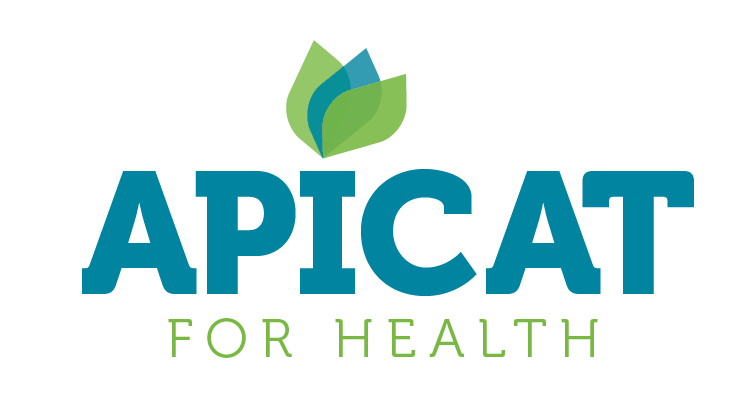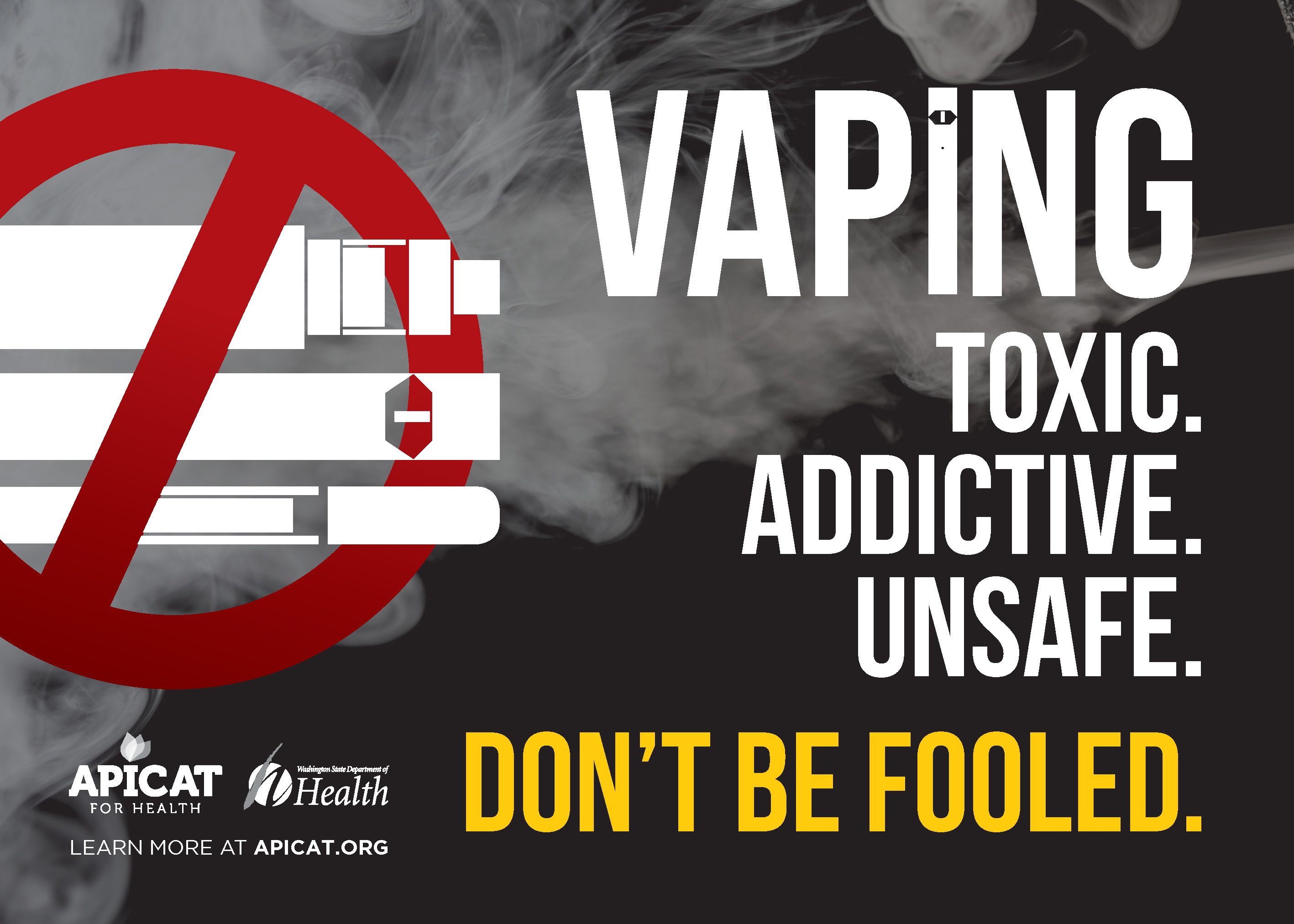EMERGING PRODUCTS: E-CIGARETTES/VAPOR PRODUCTS
Don’t Be Fooled!
As a member of the Healthy King County Coalition – Tobacco, Marijuana, and Other Drugs Workgroup, APICAT and partners created a campaign to promote education on the health impacts of e-cigarettes and other emerging products.
Youth use of e-cigarettes has risen. This is due to tobacco companies being the main manufacturers of vapes, and their target audience is unfortunately the youth. (Ex: Vaping devices are planted near candy displays at stores, sold in youth-oriented mall kiosks, and sold in candy-like flavors. The list goes on.)
Don’t Be Fooled Cards available in: English, Traditional Chinese, Simplified Chinese, Korean, and Vietnamese.

Electronic nicotine delivery system, or ENDS, are battery operated devices that heat a nicotine solution to produce vapor for inhalation. The most popularly known ENDS is e-cigarettes, but the devices are also known as e-hookah, vape pens, mods, tanks and so forth. For youth, however, the more popular term is “vaping”, which refers to all ENDS.
The nicotine solution is called e-juice, which has four ingredients: liquid nicotine, propylene glycol, vegetable glycerin, and flavoring. As little as 1 teaspoon of nicotine solution can kill an average adult.

Tobacco Presentations Available for Download:

-
TOBACCO – NEXT GENERATION: NEW PRODUCTS, SAME TARGETS!
-
STANDARDIZED TOBACCO ASSESSMENT for RETAIL SETTINGS (STARS)
Myth or Fact?
The most common pro-vaping argument is that e-cigarettes are less harmful than traditional cigarettes. While cigarettes do contain more than 7,000 harmful chemicals, safer does not mean safe. Vapors contain:
- Formaldehyde releasing chemicals, which are carcinogens and can be used for embalming
- Free radicals, specific oxygen atoms that cause cellular damage
- Diacetyl, which leads to bronchitis obliterans, or popcorn lung, which is severe lung damage.
- Nitrosamine
- Diethylene glycol, which is antifreeze, toxic to humans
E-juices that are labeled to have “No nicotine”, actually may contain nicotine. One cartridge can contain up to 20 mg of nicotine.
Another argument is that second-hand vape is not as dangerous as second-hand smoke. However, as stated above, the vapors are not just water vapor; dangerous chemicals are also present.
E-cigarettes are used as smoking cessation devices. However, the Food and Drug Administration (FDA) has not approved it as such. Unlike approved nicotine replacement therapies, such as, nicotine patch or gum, the amount of nicotine delivered per puff is inconsistent between brands making it difficult to track intake. In fact, using e-cigarettes as a teen is associated with a higher likelihood of using traditional cigarettes.
- It is illegal for anyone under the age of 18 to purchase, attempt to purchase, possess, or obtain vapor products. A person under 18 possessing vapor products may face an infraction penalty.
- Vapor products cannot be used in the following indoor places:
- Child care facilities
- Schools
- Within 500 feet of schools
- School buses
- Elevators
- Vapor products cannot be used in the following outdoor places:
- Property upon which a child care facility is located and under control of that facility.
- Property upon which a school is located and under control of the school.
- Playgrounds
- Liquid nicotine containers must be child-resistant and have specific labeling requirements, such as, clearer labeling of the contents of nicotine.
- Health warnings are required on packing and advertising.
- Vapor product retailers and other distributors must be licensed by the Liquor and Cannabis Board.


